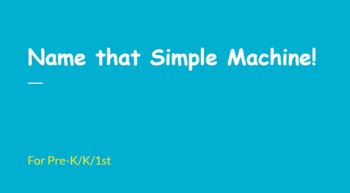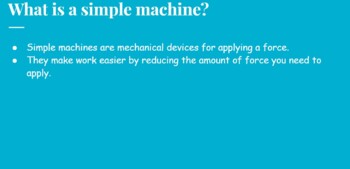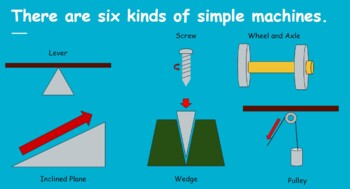Name That Simple Machine Google Slides Lesson for Pre-K, Kindergarten, and 1st G
On-The-Side Ventures
0 Followers
Grade Levels
PreK - 1st
Subjects
Resource Type
Standards
NGSSK-PS2-2
NGSSK-PS2-1
Formats Included
- Word Document File
- Google Apps™
Pages
16 Slides
On-The-Side Ventures
0 Followers

Includes Google Apps™
The Teacher-Author indicated this resource includes assets from Google Workspace (e.g. docs, slides, etc.).
Description
This is a Google Slides lesson on Simple Machines, targeted for Pre-K, Kindergarten, and 1st Grade students. There are 16 slides in all and they include interactive examples of each of the simple machines and let the students decide for themselves what each example is before clicking for the answer.
Total Pages
16 Slides
Answer Key
N/A
Teaching Duration
30 minutes
Report this resource to TPT
Reported resources will be reviewed by our team. Report this resource to let us know if this resource violates TPT’s content guidelines.
Standards
to see state-specific standards (only available in the US).
NGSSK-PS2-2
Analyze data to determine if a design solution works as intended to change the speed or direction of an object with a push or a pull. Examples of problems requiring a solution could include having a marble or other object move a certain distance, follow a particular path, and knock down other objects. Examples of solutions could include tools such as a ramp to increase the speed of the object and a structure that would cause an object such as a marble or ball to turn. Assessment does not include friction as a mechanism for change in speed.
NGSSK-PS2-1
Plan and conduct an investigation to compare the effects of different strengths or different directions of pushes and pulls on the motion of an object. Examples of pushes or pulls could include a string attached to an object being pulled, a person pushing an object, a person stopping a rolling ball, and two objects colliding and pushing on each other. Assessment is limited to different relative strengths or different directions, but not both at the same time. Assessment does not include non-contact pushes or pulls such as those produced by magnets.





